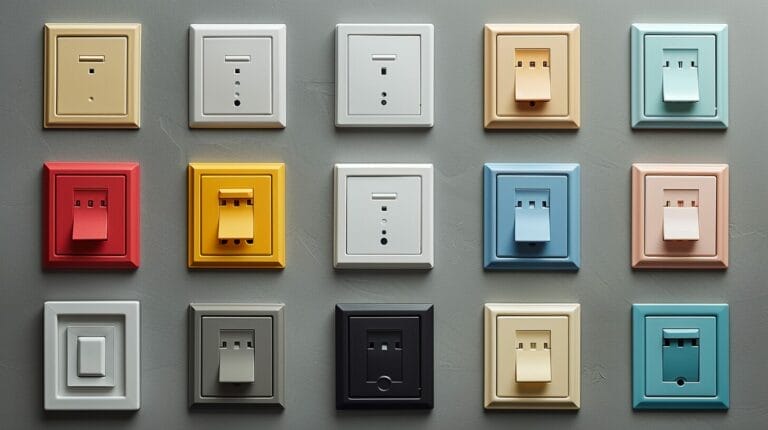Half Wave Rectifier Equation: Unveil the Underlying Circuit
In the vast and intricate world of electronics, the Half Wave Rectifier Equation stands as a cornerstone, essential for understanding the functionality of many electrical circuits. This discussion aims to unravel how this equation governs the Half Wave Rectifier, a device celebrated for its simple yet fascinating functionality.
By the end of our Half Wave Rectifier Equation guide, the intricate connections between mathematics and electronics will not only pique your interest but also inspire further exploration into this field.
Key Takeaways
- The half-wave rectifier converts AC voltage into DC voltage.
- It operates by forward-biasing the diode during the positive half cycle and reverse-biasing the diode during the negative half cycle, blocking the other half cycle.
- The circuit only processes half of the AC wave, resulting in a pulsating DC output.
- The use of a capacitor filter can smooth the pulsating DC voltage and reduce the ripple effect in the output signal.
Introduction to Half Wave Rectifier Equation

A fundamental concept in electrical engineering, the half-wave rectifier, is pivotal for converting alternating current (AC) into direct current (DC). This conversion is fundamental as it transitions the type of power supplied by energy companies (AC) into the form required by most electronic devices (DC).
The half-wave rectifier circuit, in its essence, is both simple and powerful. A half wave rectifier, which is a type of rectifier that allows one half of the ac input, consists of a single diode in conjunction with an AC voltage source and a load resistor.
The diode’s biasing (forward in positive AC voltage and reverse in negative) serves as the gateway for current flow, thereby producing a rectified DC voltage at the output. The half-wave rectifier equation, Vout = Vpeak * |sin(theta)|, illustrates this principle beautifully, showing how the negative half of the AC voltage is effectively removed, transforming it into DC voltage.
Working of Half Wave Rectifier

Understanding the half-wave rectifier’s operation requires a dive into the core principles and the derivation of its fundamental equation. Key stages include:
- Inputting AC voltage into a circuit composed of a diode and resistor.
- Forward biasing the diode during the positive half cycle allows current flow, converting AC to DC voltage.
- Reverse biasing the diode during the negative half cycle, as is used in the half wave rectifier, prevents current flow, resulting in a pulsating DC output.
This selective processing of the AC wave, hence the name “half-wave rectifier,” underscores its innovative solution, efficiently converting AC to DC in various applications.
Advantages of Half Wave Rectifier

A key advantage of the half wave rectifier is its ability to efficiently convert AC voltage to DC voltage. This is a crucial factor in the field of electronics, where DC power is often the preferred choice. Its high conversion efficiency ensures that little energy is lost in the process, making it an eco-friendly option. This efficient conversion is facilitated by the half wave rectifier equation, which outlines the fundamental operations of this device.
The simplicity of the half wave rectifier’s design is another significant advantage. With its straightforward layout and minimalistic components, the halfwave rectifier circuit is easy to understand and implement. This simplicity translates into cost-effectiveness, making the half wave rectifier a budget-friendly choice for industries striving to cut costs without compromising on performance.
Furthermore, the design of the full-wave rectifier allows for easy maintenance and troubleshooting. Due to its simple underlying circuit, faults are easy to detect and rectify, saving valuable time and resources.
Disadvantages of Half Wave Rectifier

Despite its many benefits, the half wave rectifier does have a few drawbacks, including low output voltage and the introduction of harmonics in the output waveform. As we delve deeper into the disadvantages of a half wave rectifier, we’ll find these issues can hinder the overall performance and efficiency of a half wave rectifier circuit.
To shed some light on the subject, let’s focus on three main disadvantages:
- Low Output Voltage: The halfwave rectifier operates by only rectifying half of the input waveform. This means that it discards half of the power available in the input signal, leading to a low output voltage. This is a significant disadvantage as it lowers the overall efficiency of a half wave.
- High Ripple Factor: Half wave rectifiers have a high ripple factor. This means the output contains a large amount of AC component, which can lead to a distortion in the output signal. We must use filtering techniques to reduce this, but it’s an additional step that may not be necessary with other types of rectifiers.
- Harmonics: The half wave rectifier introduces harmonics in the output waveform. These harmonics can cause interference with other circuits and degrade the quality of the output signal.
While the simplicity of the half wave rectifier circuit is appealing, these disadvantages can’t be overlooked. They impact the overall performance and limit the scope of its application. As we continue to push for innovation, it’s essential to keep these limitations in mind, and seek solutions to overcome these challenges.
How Can Understanding Half Wave Rectifier Circuits Help in Troubleshooting Electrical Issues in Carbon Monoxide Detectors?
Understanding half wave rectifier circuits can be crucial in troubleshooting electrical issues in first alert carbon monoxide detectors. These circuits convert AC to DC, and a malfunction can lead to inaccurate readings and false alarms. Knowledge of these circuits can help identify and rectify problems efficiently.
Capacitor Filter in Half Wave Rectifier

The capacitor filter in a half-wave rectifier is a crucial component that helps smoothen the pulsating DC voltage. When AC voltage is applied to the half-wave rectifier circuit, it helps convert AC voltage to DC, but the output isn’t smooth. It’s here that the capacitor filter steps in, smoothing the output and reducing the ripple effect.
But how do we calculate the value of this capacitor filter? It’s quite simple. The value of the capacitor is usually determined by the load resistance and the frequency of the applied AC voltage. A larger capacitor value leads to less ripple voltage, hence a smoother DC output. Remember, the time constant (RC) should be much larger than the time period of the AC voltage for effective filtering.
We understand that in an era where innovation is key, it’s essential to optimize every component in a circuit. A properly calculated and utilized capacitor filter can significantly improve the efficiency of a half-wave rectifier circuit. Therefore, understanding the importance of the capacitor filter in half wave rectifier and its calculation isn’t just critical, but also opens the door to further innovation in rectifier circuit design.
Conclusion
In wrapping up, we’ve delved into the half wave rectifier equation, understanding its workings, pros, and cons.
We’ve seen how it effectively converts AC to DC, albeit with some limitations.
When a capacitor or an inductor, which can be used as a filter, is added to the full-wave rectifier, a device used to convert AC into a lower DC voltage, it enhances performance by reducing the ripple voltage.
Despite its simplicity, its impact in electronic devices is profound.
We hope this information helps you grasp the technicalities and importance of the half wave rectifier.
Frequently Asked Questions
What is a half wave rectifier?
A half wave rectifier is the simplest form of a rectifier that allows only one-half of the AC voltage waveform to pass while blocking the other half. It uses one diode to transform AC voltage into pulsating DC waveform.
What is the equation for the output power of a half wave rectifier?
The output power of a half wave rectifier can be calculated using the equation P = (Vrms^2) / (2*R), where Vrms is the root mean square value of the AC input voltage and R is the load resistance.
What are the applications of half wave rectifier?
A half wave rectifier is used in applications where low output power and efficiency are acceptable, such as in small power supplies, battery chargers, and dimmer circuits.
How does a half wave rectifier circuit work?
In a half wave rectifier circuit, during the positive half cycle of the AC input voltage, the diode is forward biased, allowing the voltage waveform to pass. During the negative half cycle, when a high AC voltage is applied to the diode in the rectifier, a device used for conversion, the diode is reverse biased, blocking the voltage waveform.
What is the voltage waveform across the load in a half wave rectifier?
In a half wave rectifier, a device where high AC voltage is applied, the voltage across the load results in a pulsating DC waveform, which maintains a constant DC component with AC ripple superimposed on it.







